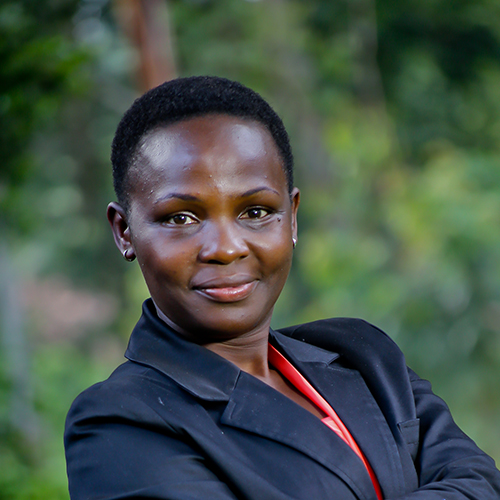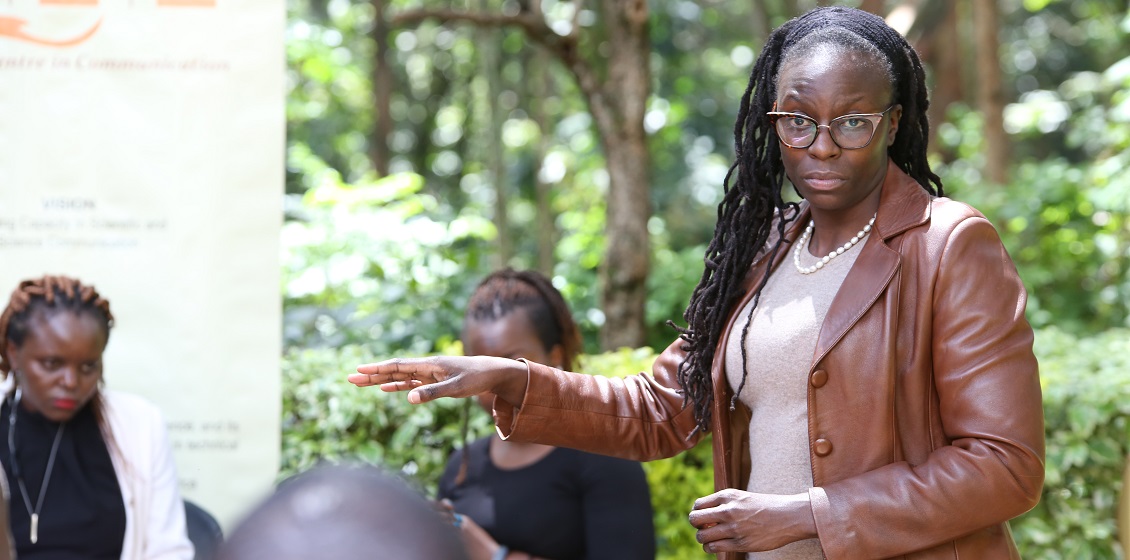Some of Kenya’s most celebrated scientists and researchers congregated in a hotel in Nairobi, to celebrate the world anti-microbial week. Apart from the jaw breaking scientific recommendations that came at the end of the two-day event to research more on taming the abuse of drugs, was scientists needed to interact more with the public. The relationship between them and the public, they said, is distant due to several roles. The public has a perception that scientific research and the outcomes of it are produced and discussed in a ‘closed shop’, without their involvement while scientists assert that they are not heard and their expertise not engaged [1]. Scientists feel their subject often are on the “fringes on the media” [2]. With journalists, the engagement is often described as “distant” [3], “gap” [4] or “love hate” and other metaphorical terms.
However, the name they prefer to use in this deviation from their ivory towers is not “communication”. It is public engagement.
Kenyan scientists are becoming active in bridging this gap by communicating their research in community camps and the media. However, the name they prefer to use in this deviation from their ivory towers is not “communication”. It is public engagement. This essay involved interviewing scientists and people employed by research institutions to carry out the engagement, interviews that were analysed thematically.
Public engagement is “any scientific communication that engages an audience outside of academia” [5]. It is a more inclusive term with a general need to take science out of the labs to non-scientific audiences. “Scientific communication” on the other hand is using “appropriate skills, media, activities and dialogue to produce one or more of the following personal responses to science: awareness, enjoyment, interest, opinion-forming and understanding” [6]. Science communications occurs in any of these three spaces: science museums, and other centers that embody the encyclopaedic spirit of the research community and often targeting to rally the public to support scientific research; the media, public forums, lectures and conferences. A conversation with seven researchers in Kenya, and two experts in public engagement revealed a general willingness to engage the public, through the media and other non-academic communities and the media. Be that as it may, they also expressed fears that have held them back from fully engaging the platforms that would make science more accessible to anyone without that industry.
This noble endeavour has a history. It has been years of evangelicals calls for scientists to help bridge this gap by popularizing science and one of the most acknowledged calls was the 1995 statement by British astronomer Sir Arnold Wolfendale— hence the name Wolfendale Committee (1995) — who stated that that scientists receiving public funding for their research have a duty to communicate their work to the public. This, and many other declarations, formed the British public engagement with science, and which trickled to the developing countries that they fund such as Kenya. United Kingdom hosts one of Kenya’s greatest science funders— the Medical Research Council (MRC), the Welcome Trust— and with evidence that the East African region gobbles most of the research funding, they do ask the Kenyan scientists that they fund how much money they will spend in public engagement. They also avail several public engagement grants to the researcher they fund.
Planned Behaviour theory
One of the scientists that have undergone this journey is Joseph Othieno, a veterinary surgeon and now a PhD in science communication. Immediately after graduating from veterinary school, Dr Othieno was posted to work among the Maasai, a pastoral community in arid and semi-arid Kenya. The Maasai community’s source of income is majorly livestock, and he wanted to teach them “low cost high impact” ways to battle diseases such as Mastitis, foot and mouth among others.
He told DDRN: “It was so difficult…I had the information, but I was unable to share this knowledge with them”.
Eventually, Dr Othieno enrolled for a postgraduate course in communications and ended up being taking a PhD on it. Like six of his colleagues interviewed by DDRN, Dr Othieno’s motivation to engage with non-scientific audience was to share knowledge. This willingness points to one of the three reasons that (de)motivates researchers to communicate to participate in public engagement as laid out in the Planned Behavior theory explained by Ajzen. Icek Ajzen, a social psychologist and professor emeritus at the University of Massachusetts Amherst, writes of the planned behaviour theory:
“In simple terms intentions to perform behaviours of different kinds can be predicted with high accuracy from attitudes toward the behaviour, subjective norms, and perceived behavioural control, and these intentions, together with perceptions of behavioural control, account for considerable variance in actual behaviour”
In this theory, the intentions are measured by endorsement (“tomorrow I will do ABC”) and strength of that endorsement (“I cannot fail to do ABC”). Using the theory, Ellen Poliakoff and her colleagues analysed interviews from scientists and researchers and the results published in her paper showed that scientists appreciated the importance of public engagement, especially in the media. Her paper was one of the few that went beyond the cliché “there was a gap between scientists, research and the public” and asked why this perceived gap existed.
In the paper, scientists listed the reasons why they should be on the media: science and research is core of many society’s needs such as health, food security and all; there is a difference in the way science and scientists are presented in the media and those that are popularizing science, and scientists should come right those wrongs; scientists are a group of special people from whose knowledge the public can benefit, and make people change their minds.
The attitude in the scientists makes them question “is this engagement a good or a bad thing?” Dr Othieno’s answer to it was a “Yes”, and therefore he went to participate in the exercise. Another researcher who works with a lab that conducts genomic studies on strains on corn in Kenya felt his work is important given the impending food security in Kenya felt his study would help small scale farmers. Younger scientists said that the exposure in the media would be beneficial for his career. He said:
“These days you get appointed to these commissions by how much buzz in the media, and how much you trend in the media, so I will take all the chances I get to be on the media”
Other scientists’ attitude was not as welcoming, reinforcing the perception that regimentation and training in research leaves scientists shy of self-effacing tendencies. They are, as one blogger writes, “trained in the scientific method, and weary of having their research misrepresented, post-graduate researchers collectively appreciate the importance of suspending impulsive thoughts, weighing evidence, and tolerating the uncertainties surrounding “truth.”. One said that he did not have the skills to participate in the debates in public or in the media. This hesitancy came from a prior experience. He stated, as a matter of fact: “I am comfortable doing my job in the research and let the others worry about the rest because I have horrible memories of how one journalist screwed me over by misrepresenting my work”
“Saganized”
This is like behavioural control, another reason that stops or encourages scientists and researchers to participate in public engagement. They said that they do not know what journalists will do with their work and they have no control over that interaction.
And lastly, subjective norms, where the researchers said they are afraid for their reputation “dragged in the mad” and losing respect among their peers. The media, one said, “was not an adequate spot for a proper discussion”. This fear does not come from a vacuum. Cornell University astronomer Carl Sagan was hosting a popular television series Cosmos, and this led to him not being admitted to the National Academy of sciences, which most scientists consider the mark of success in their careers: being recognized by your peers. They are afraid to be “saganized”, despised in their circles for their love of attention and being celebrity.
In trying to maintain control of the communication, scientists have one mode of communication. All the scientists and researchers who talked to DDRN considered themselves as a source of knowledge that people needed, and that it was complex and they needed to “break it down that my grandmother in the village will know”. The scientists perceived the public as “other”, and this included even other researchers from other fields that are not considered “sciency” such as those from social science. For this reason, they needed to “educate” the other, because they were not their peers.
The scientists perceived the public as “other”, and this included even other researchers from other fields that are not considered “sciency” such as those from social science. For this reason, they needed to “educate” the other, because they were not their peers.
This perception that there was a knowledge gap that needed to be filled in the public has persuaded the model of communication in the engagements that scientists used to communicate. It has been the traditional methods that seek to cure some deficiency in knowledge in the public or increase the knowledge or “focused on increasing scientific literacy and public understanding of science”. These are “push methods” where the scientist just wants to dump the knowledge on the scientist, styles that have been criticized as “too narrow—among other critiques— to fully cover the complexities of modern scientific debates.
Joy Owango, the director of the Training Centre in Communication at the University of Nairobi has trained more than 3,000 researchers in public engagement, ranging from writing op-eds, how to act in interviews and conversations in communities. Joy wants scientists to appreciate ‘non-traditional’’ models that just doesn’t transmit scientific knowledge but try two-way communication. “Scientists always are for the idea that journalists that should be taught to know how to report on science, and yet there are more scientists that journalists and they should know how to engage in that space with non-scientific audiences”
Also present was Lillian Mutengu, who is a former journalist and now the community and public engagement manager in African Academy of Sciences. AAS, a pan African organization that supports more than 3,000 scientists in the continent manages and founds programmes that encourages the embrace of both traditional and non-traditional methods of engaging.
This article engaged seven researchers and two public engagement experts on an unscripted conversation about public engagement. These chats revealed that while scientists and researchers express a desire to engage the public, they are held a back or motivated by three things as explained in the planned behaviour theory: Attitude on whether the engagement would be good or not; subjective norm where they worry about what their colleagues would think and; perceived control on whether they had control of the engagement out of science or not. Those that chose to participate, however, always used the traditional methods of communication that are push where they felt that there was a need to educate the public. There has been an increase in engagement with the public but for it to succeed there is need for building the capacity of scientists to use non-traditional methods of delivery as well.
Verah Okeyo is a global health reporter from Kenya. Reach her on verah.okeyo@alumni.lse.ac.uk
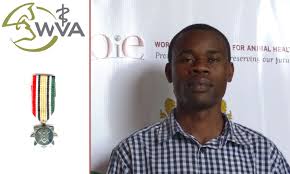

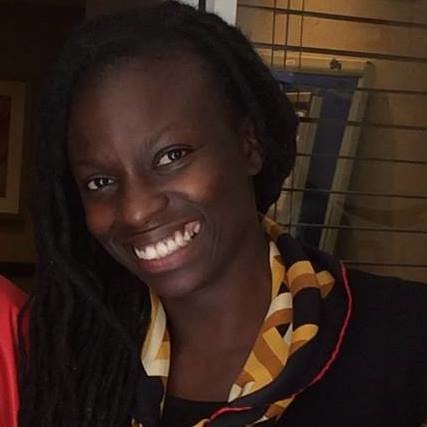

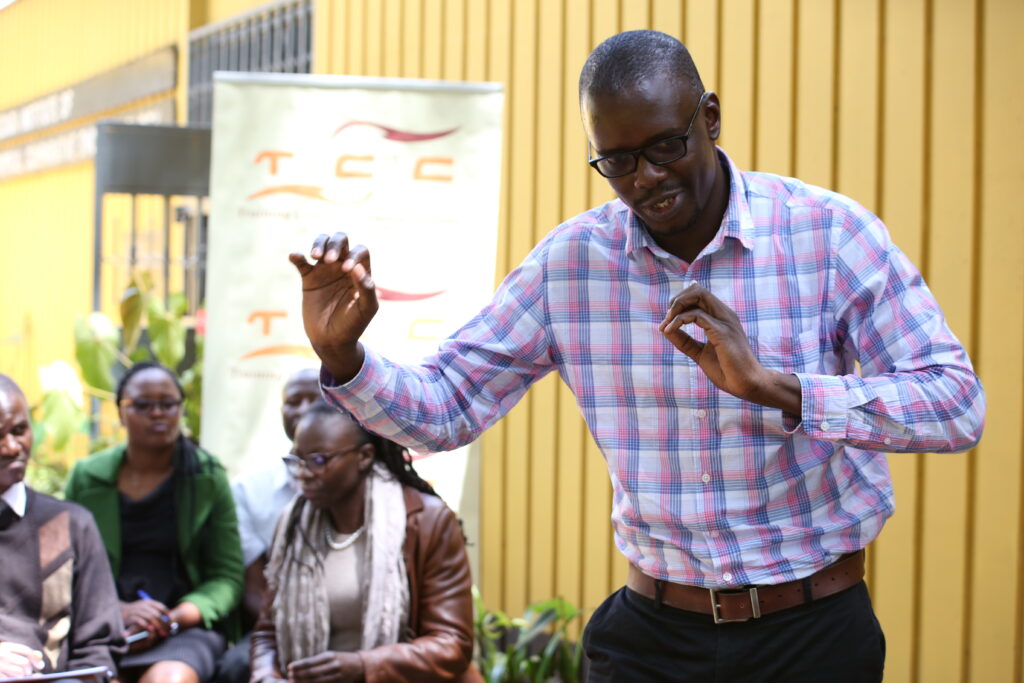
Works cited
[1]. Claessens, M. (2018). Research institutions: neither doing science communication nor promoting ‘public’ relations. Journal of Science Communication, 13(03). https://doi.org/10.22323/2.13030303
[2]. Owuor, O. (2008). The Challenges of Communicating Science: A Journalist’s Perspective. Nairobi.
[3]. Peters, H. P. (2013). Gap between science and media revisited: Scientists as public communicators. Proceedings of the National Academy of Sciences of the United States of America, 110(SUPPL. 3), 14102–14109. https://doi.org/10.1073/pnas.1212745110
[4]. Amend, E., Capurro, G., & Secko, D. M. (2014). Grasping scientific news. Journalism Practice, 8(6), 789–808. https://doi.org/10.1080/17512786.2013.868146
[5]. Burns, T., Connor, D. J., & Stocklmayer, S. M. (2003). Science communication: a contemporary definition. Public Understanding of Science, 12.
[6]. Poliakoff, E., & Webb, T. L. (2007). What factors predict scientists’ Intentions to participate in public engagement of science activities? Science Communication, 29(2), 242–263. https://doi.org/10.1177/1075547007308009
![]()
![]()

